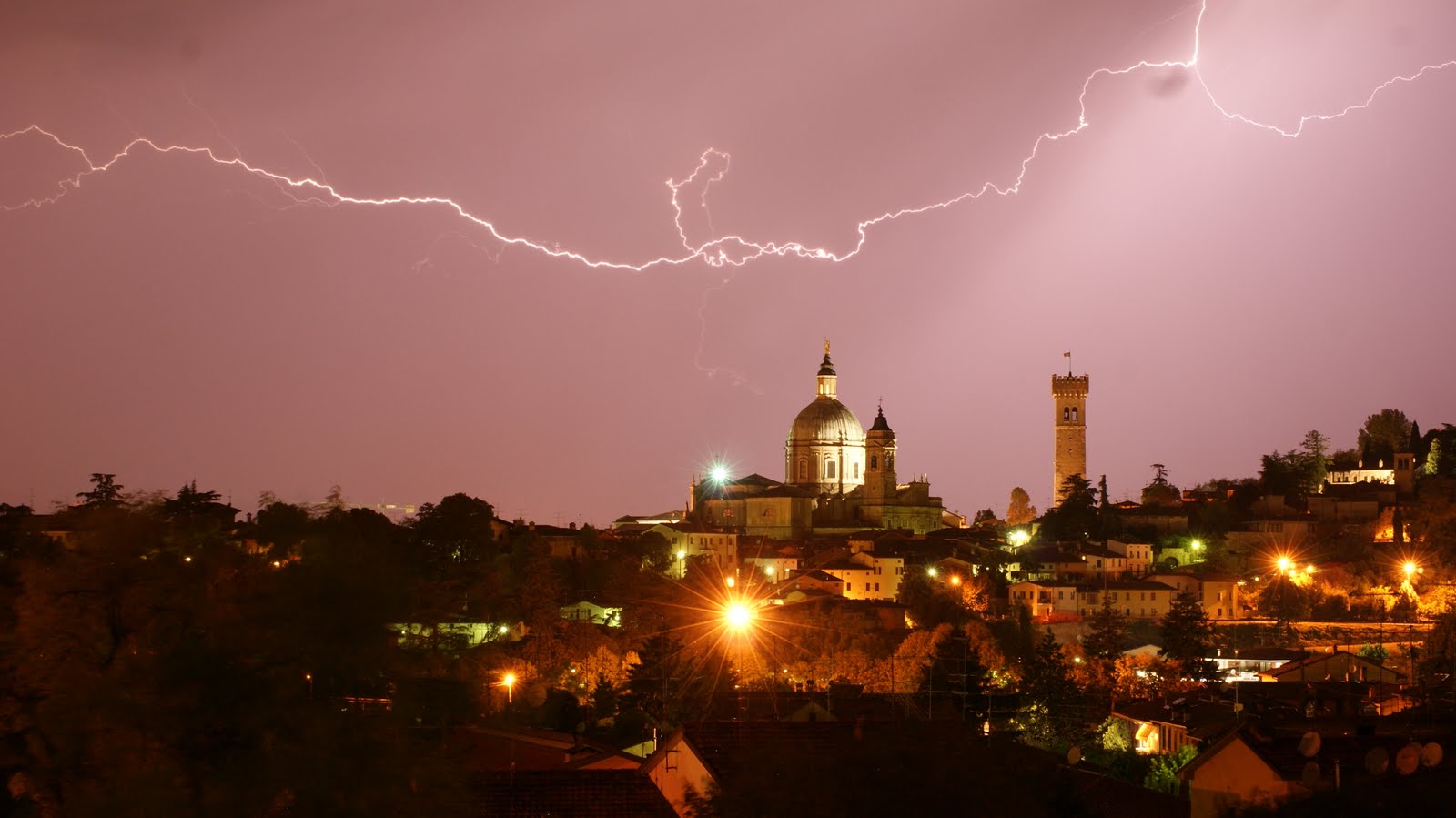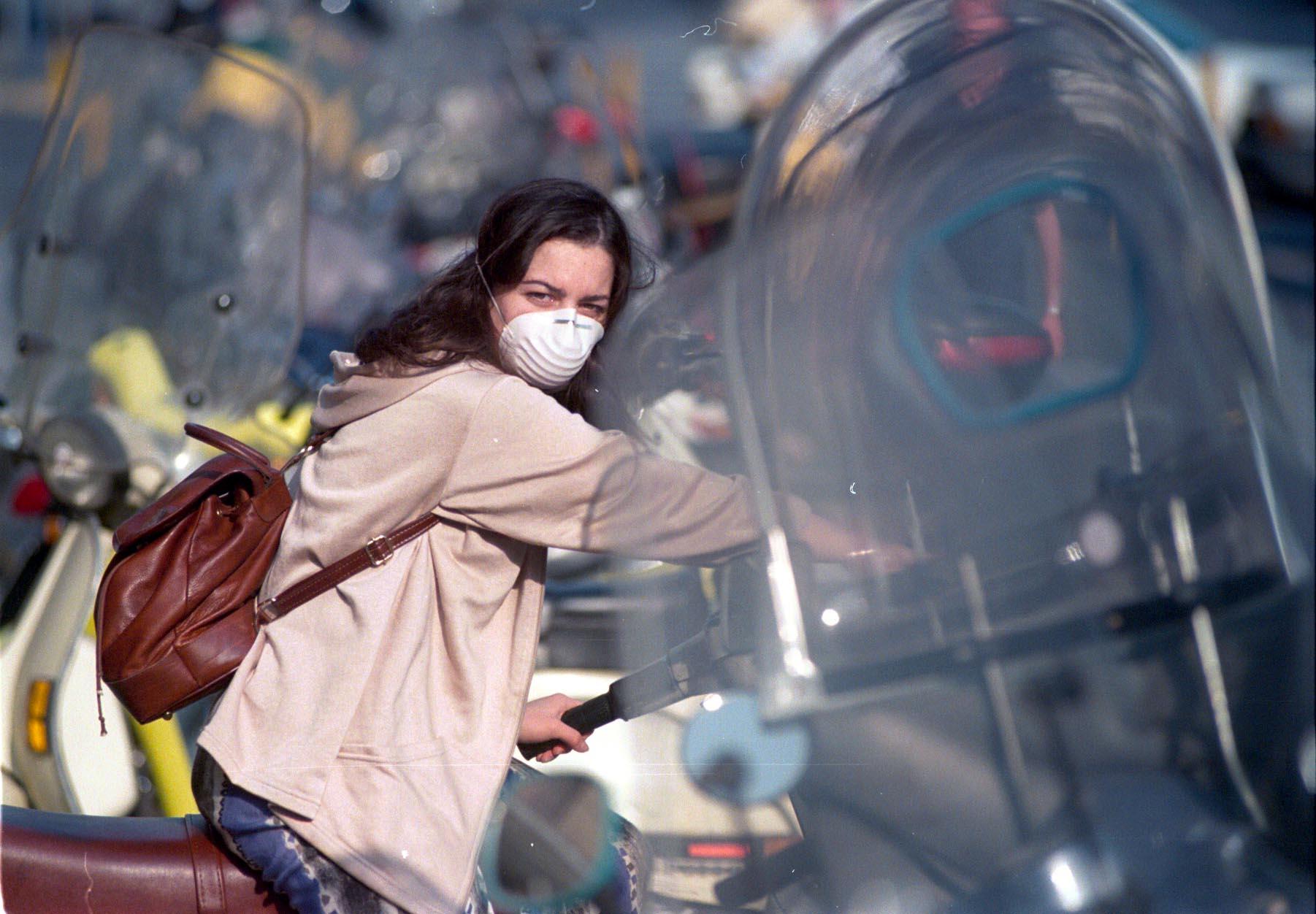Asudden drop in temperature in Melbourne on Monday evening from peaks of 35C brought with it severe thunderstorms and triggered a mass asthma event that left hospitals struggling to treat 8,500 patients.
There is a small group of researchers around the world working to understand the phenomena known as “thunderstorm asthma”, which although rare, can have devastating consequences. Climate change, they say, may be where part of the blame lies.
On Sunday 20 people remained in hospitals across Victoria, struggling with respiratory and related conditions, while four remained in critical condition. Atleast six people are known to have died after their asthma was triggered during the thunderstorm, the health department confirmed over the weekend.
A major, state-wide investigation into the response of emergency services to the event has been ordered.Paramedics did the best they could to respond to an unprecedented 1,900 emergency calls in five hours on the evening of 21 November but were unable to reach everyone in a reasonable time. Ambulances made constant trips to emergency departments already overwhelmed as hundreds of patients streamed in under their own steam.
The acting general secretary of Ambulance Employees Australia, Danny Hill, said it would have been a traumatising night for paramedics.“For anyone who worked that night, from staff on the ground to senior management, they regarded it as the busiest night they ever worked in their whole careers,” he said. “Very few crews got fed. They worked 14 hours straight. Everyone worked together, worked hard, and stepped up.
There was about 30 people who were so severely ill that they had to be taken straight into intensive care. So you’re talking an event equivalent to a bushfire where people are severely burned, or a terrorist attack where people are critically injured.“That’s the level of chaos our crews dealt with on Monday night.”Asthma patients can be some of the most difficult for paramedics to respond to. They deteriorate very quickly, and severe cases require more than the immediate treatment a paramedic can provide, including continuous days of intravenous drugs and ventilation. Many, Hill said, went into cardiac arrest.Kathy Bowlen from St Vincent’s hospital said the emergency department there had considered opening a temporary emergency department in the foyer of the hospital to cope with the demand.While not the first case of thunderstorm asthma in Melbourne, it was the most deadly and the severe.
What researchers don’t know is why sometimes a combination of high pollen counts and thunderstorms lead to a mass asthma event, while other times, those two factors combined have little impact on people’s respiratory health at all. What other factors might be playing a part?What is known is that grass pollen is usually too big to get into the lungs to cause asthma, and instead causes a reaction in the superficial respiratory systems of those with pollen sensitivity: a hay fever reaction such as a runny nose, sore throat and itchy eyes are more common.But when a thunderstorm occurs, pollen which had settled during the day can be swept back into the air and the moisture in those winds combined with wind power causes the pollen to rupture into smaller pieces, between 0.5mm and 2.5mm in diameter. Those small fragments are then able to penetrate the superficial respiratory system and get into the lungs, triggering asthma and other serious respiratory responses.
Gennaro D’Amato is a professor of respiratory medicine in Italy and chairman of the World Allergy Organisation’s climate change, biodiversity and allergy committee. He is the world expert on thunderstorm asthma and one of the most published authors on the phenomena in the scientific literature.He has been monitoring thunderstorm asthma events throughout the world and says they have also been seen in London in the UK, Naples in Italy, and Wagga Wagga in New South Wales.A sudden and extreme asthma outbreak that occurred in London in June 1994 coincided with a heavy thunderstorm, D’Amato said. In the space of just 30 hours, 640 patients with asthma or other airway diseases attended London hospitals, nearly 10 times the usual number. For 283 patients, the storm triggered their first known attack of asthma. And for every patient that did seek help, many more suffered at home.
“Fortunately, even though it can induce severe asthma, outbreaks associated with thunderstorms are neither frequent nor responsible for a high number of disease exacerbations,” D’Amato told Guardian Australia.“However, the mechanisms involved in the release of allergens from pollens during thunderstorm should be known so that patients can receive information about the risk of an asthma attack, including in those usually only affected by seasonal allergic rhinitis [hay fever].
”The frequency of thunderstorms had recently increased in some geographical areas, he said, particularly in temperate and subtropical climates. Research has shown that thunderstorms and their destructive winds are expected to become more severe as the climate changes. D’Amato has found a number of characteristics common to all of the asthma epidemics. Theiroccurrence is closely linked to thunderstorms, are limited to late spring and summer when there are high levels of airborne pollen grains, have an onset close to the arrival of the thunderstorm and to major rises in the concentration of pollen grains, and people with hay fever and asthma and who stay indoors with windows closed during the thunderstorm are unaffected.Those not undergoing asthma treatment are at major risk, his research has also found. In the Melbourne epidemic on Monday, between 20 and 40% of those affected had never had asthma before, and so would not have been undergoing treatment.Associate Prof Paul Beggs, an environmental health scientist with Macquarie University in Sydney, is best known for his research on climate change and its impact on allergens such as pollen.Some research had found that the potency of pollen grains had been increasing, he said. Anthropological climate change through the release of carbon dioxide into the atmosphere could be responsible for this growing pollen potency, he said “Plants use carbon dioxide in photosynthesis,” he said. “It’s like if you change your diet, there are changes in your body.
So plants use carbon dioxide through photosynthesis, and if you change the concentration of carbon dioxide in the atmosphere then their growth conditions are changing.”“A few smart scientists thought to put these highly allergenic plants into a glass house where we can control all the conditions, from the temperature to light, water and levels of carbon dioxide.” What they found, he said, was increasing the amount of carbon dioxide led to a whole range of changes in the plants, including more pollen and more potent pollen.“All of these thing are happening in the background: climate change, increasing pollen potency, and they all mean a thunderstorm asthma episode is more likely than it was 20 years ago.”Beggs is a researcher with the AusPollen Partnership, a multi-centre cross-disciplinary team of investigators including eminent allergy physicians and scientists looking at pollen aerobiology and climatology.
Their work is essential given Australia is the fourth worst country for allergic hay fever and asthma.The principal investigator on that team, Associate Prof Janet Davies, said another factor researchers believed may trigger asthma is a sudden temperature change, which occurred in Melbourne on Monday as the temperature fell rapidly from 35C into the low 20s. But much more research and data was needed to understand the phenomena, she said.“The AusPollen Partnership is encouraging people to tell us about their symptoms and triggers, and free app downloads allow people to do this daily if they want to,” she said.“That will help us understand regional patterns and, by integrating that data with geo-spacial data, will help us understand who is at greater risk and the threshold for triggering a higher risk.”The difficulty for researchers is that pollen monitoring, though extensive in Melbourne, did not go back far enough to help them develop a clear picture of all the factors triggering thunderstorm asthma.
This would allow them to issue alerts when they could see a perfect storm of risk factors about to collide.But Associate Professor Ed Newbigin from the school of biosciences at the University of Melbourne said thunderstorm asthma was going to be “a hard thing to get a handle on” because of the lack of data.“The big question is why sometimes high pollen counts combined with thunderstorms sometimes trigger these asthma events and sometimes don’t,” he said.“We need to understand what other factors work together if we want to reduce thunderstorm asthma. Because in Melbourne, high pollen counts and thunderstorms often coincide. But most of the time when they do, nothing happens.”




